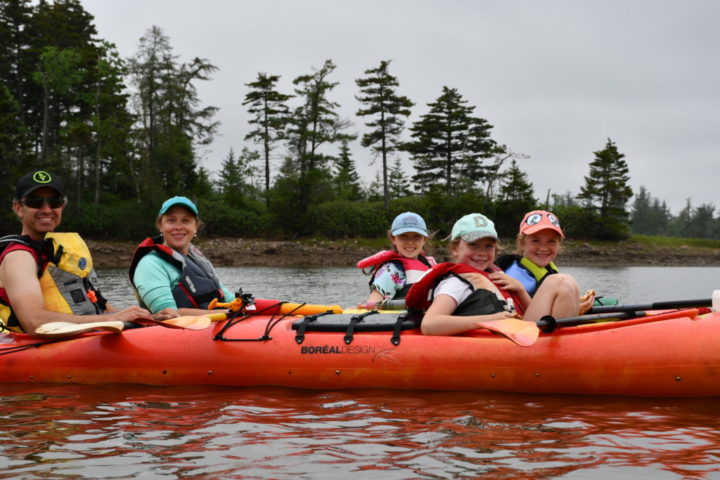[vc_row][vc_column][vc_column_text]
Protection of the Musquash Estuary was nearly a decade in the making
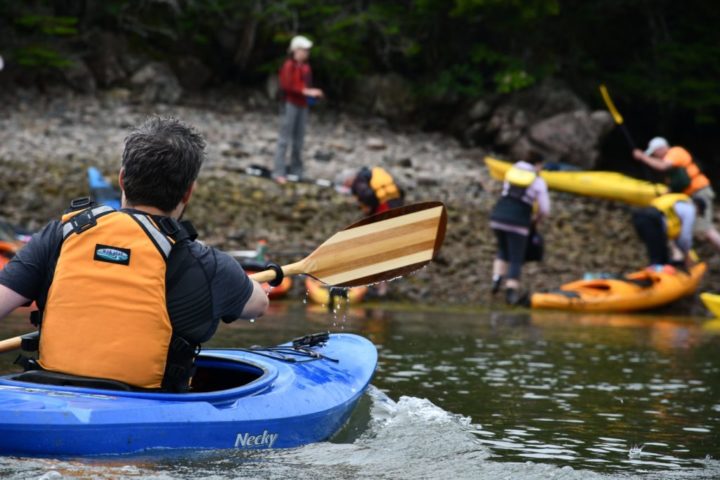
Nearly 120 people flocked to the Musquash Estuary Saturday to witness its beauty and celebrate the waterway being a protected area.
“From a Marine Protected Area standpoint, this has become almost a living laboratory,” said Paul McNab, a researcher from the Department of Fisheries and Oceans, floating down the Musquash River in his kayak. “[Like] how do you actually develop and implement these protective measures?”
The decision to make the river a priority for the Conservation Council of New Brunswick dates back to the late 1990s, after the dismal results of an estuary habitat assessment and the critical role estuaries have in supporting marine productivity and health.
At the time, the Council partnered with fishermen’s organizations and fellow conservation groups to strengthen its grassroots movement.
In 2006 and after nearly a decade-long effort, the federal government designated where the river meets the Bay of Fundy as a Marine Protected Area (MPA) – Atlantic Canada’s first.
As a result, no industrial development has been allowed on the estuary, despite being within the jurisdiction of the Saint John Ports Corporation.
A liquified natural gas (LNG) terminal and a coal port were two proposals that never came to fruition thanks to the MPA designation.[/vc_column_text][vc_gallery interval=”3″ images=”144605,144503,144505,144511,144517,144523,144507,144533,144597,144559,144581,144571,144569,144567,144563,144497,144561,144557,144555,144553,144551,144549,144547,144545,144493,144543,144541,144539,144537,144501,144531,144529,144527,144525,144565,144521,144595,144519,144515,144513,144535,144509,144499,144577,144587,144583,144579,144575,144573,144589,144585,144490,144601,144495,144599,144603″ img_size=”full” css=”.vc_custom_1563548966779{margin-bottom: -10px !important;border-bottom-width: -10px !important;padding-bottom: -10px !important;}”][vc_column_text css=”.vc_custom_1563548783506{margin-top: -40px !important;}”]Protecting a body of water comes with its own difficulties, McNab said. While researchers can walk into the forest and perform a census, that’s much harder when the habitat and its inhabitants constantly moves and migrates.
“Canada, of course, has a long history and a celebrated history [of protecting its habitats], but moving it into the salt water is probably where we’re still at a very early stage,” he said.
Each MPA is different, McNab said, with the tidal range of the estuary being much larger than other bodies of water. Still, knowledge gained from the Musquash and the protections surrounding it has been used all across the country, the researcher said.
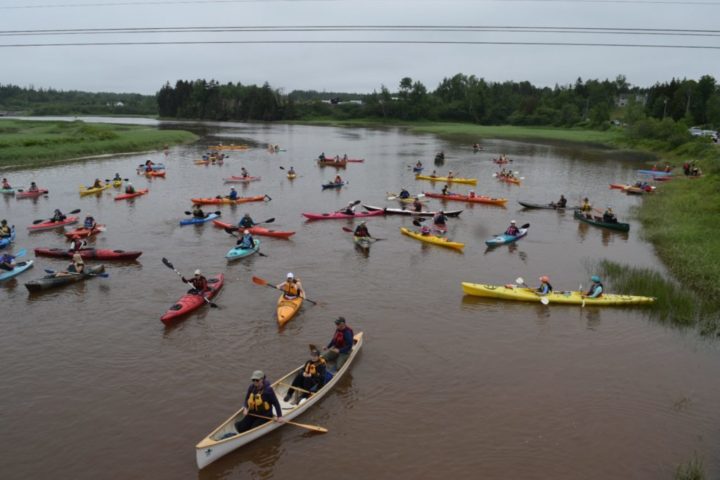
While the point of the annual Musquash Paddle is to celebrate it’s preservation, it’s also about getting people out on the water to enjoy the outdoors.
The Conservation Council partnered with CTV to raise awareness about the event and held a social media contest, with the winners being the Taylor family from Quispamsis.
“I knew there were some shipwrecks out here, so when I saw the contest I thought it would be a good idea to put a comment in,” said Tracey Taylor, accompanied by her husband and three daughters.
The 10-kilometre kayak ride begins in a saltmarsh, follows the river’s many twists and turns – passing a few beached ships from the 1900s – before flowing into the bay.
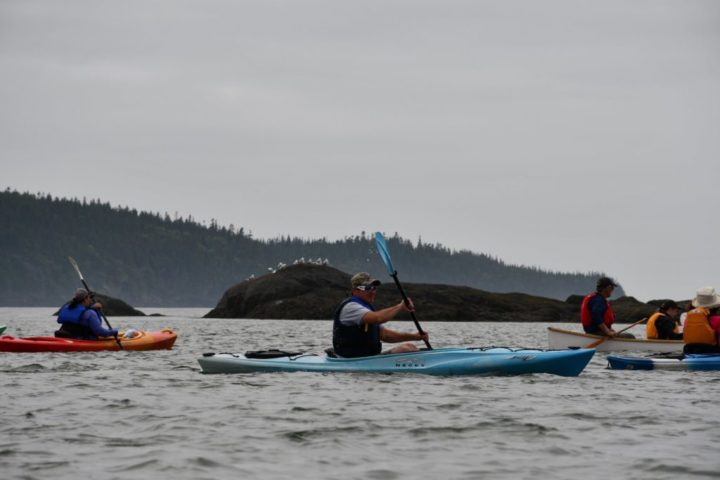
“For me to be able to kayak that far inside a saltmarsh is pretty incredible because there would have been a lot more salt marshes like that not that long ago,” said Chris Miller of the Canadian Parks and Wilderness Society’s Nova Scotia chapter. “To actually be in a place that’s been protected, to experience that wetland, it’s really quite unique and beautiful.”
Some people decided to stop their ride at the six-kilometre mark, near the mouth of the river, while others carried onto Black Beach; another four kilometres on open water through the Bay of Fundy and its picturesque shoreline, coves and islands.
Porpoises, seals, cranes and a bald eagle were seen along the way, without any garbage cluttering the view.
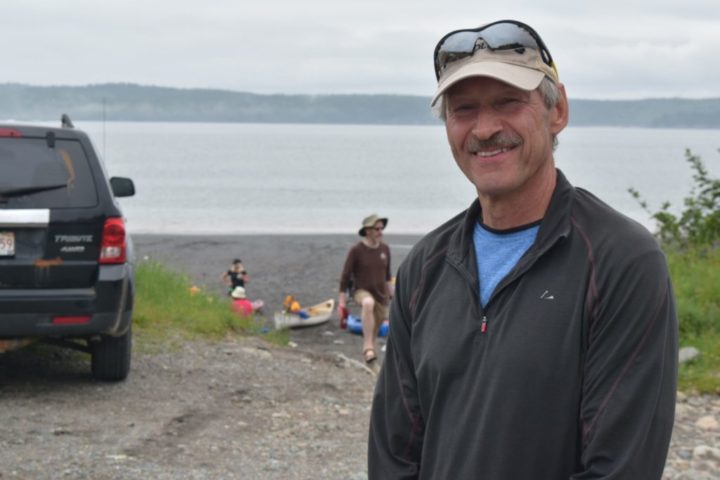
At the end, to commemorate a hard day’s work, a free BBQ was held.
“The effectiveness of watersheds when left in their appropriate condition, undeveloped, is really indisputable,” said Robin Doull, a participant in line for a hamburger. “We’ve struggled as a province with flooding the last couple years. There’s a lot that goes into that but there’s no question that development in watersheds have contributed greatly to vulnerability. I think it’s critical that we start backing some of that up.”
“I found it pretty easy,” said Khayman Giroux, another kayaker at Black Beach, there with his grandmother. “Currents were helping us along the way.”
All in all, it’s estimated more than 70 boats were out on the water.
“We have to protect all of our coastlines, I think,” said Al Reed, another participant. “We’re developing far too much of our world.”
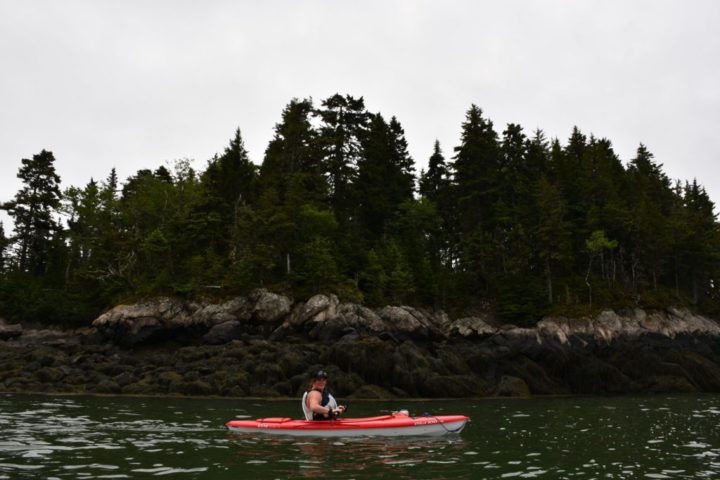
Recommended links:
Canada is once again a world leader in fisheries management and protection
Ship has sailed on weak environmental assessments: Conservation Council on Bill C-69
Fundy Baykeeper calls for stronger marine protection standards
 [/vc_column_text][/vc_column][/vc_row]
[/vc_column_text][/vc_column][/vc_row]

